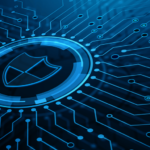In today’s hyperconnected digital environment, organizations face an escalating threat landscape where cybercriminals continuously evolve their tactics. Among their most elusive avenues is the dark web—a concealed layer of the internet that facilitates the anonymous exchange of stolen data, illicit goods, and hacking tools.
While the dark web was initially designed to promote privacy and freedom of expression, it has increasingly become a haven for criminal activity. This has made dark web monitoring an essential component of modern cybersecurity strategies. It enables businesses to detect early signs of compromise, uncover leaked credentials, and mitigate damage before breaches escalate.
Understanding the Dark Web: A Hidden Layer of Risk
The dark web is a subset of the deep web that is not indexed by traditional search engines and requires specialized browsers like Tor (The Onion Router) for access. While not all activity on the dark web is malicious, it is widely used by cybercriminals for trading:
- Stolen login credentials and personal identifiable information (PII)
- Financial data such as credit card numbers
- Intellectual property and proprietary business information
- Malware, ransomware kits, and hacking tools
- Confidential business or government data
This shadowy environment significantly increases the risks of data exposure and reputational harm, especially when an organization’s sensitive information is involved.
What Is Dark Web Monitoring?
Dark web monitoring involves systematically scanning and analyzing hidden online spaces—including forums, marketplaces, and data dumps—to identify if any information tied to a business or individual is being sold, discussed, or leaked. Unlike traditional endpoint or network monitoring tools, this approach focuses on external and anonymous platforms where threat actors operate covertly.
The primary objective is early detection of compromised data—allowing organizations to proactively respond before that data is weaponized against them.
How Does It Work?
Effective dark web monitoring combines automated technology with human intelligence to scour hidden sites for indicators of exposure. Here’s a closer look at the process:
- Data Aggregation and Crawling
Advanced monitoring tools—such as SpyCloud, Digital Shadows, or Recorded Future—deploy crawlers and bots to navigate dark web environments. These tools search for predefined keywords including corporate domains, email addresses, employee names, and other identifiers. - Threat Intelligence Correlation
Findings are filtered and analyzed using artificial intelligence and machine learning algorithms to determine if they present a real threat. Many platforms correlate this data with wider threat intelligence feeds to provide context. - Real-Time Alerts and Reporting
When a match is found, the system sends real-time alerts to the security team, often accompanied by evidence like screenshots, timestamps, and metadata. - Remediation Recommendations
Some tools offer guidance or integrate with SOAR (Security Orchestration, Automation, and Response) platforms to trigger automated responses such as forced password resets or account lockouts.
Key Features of Leading Tools
Modern dark web monitoring solutions offer a range of features that significantly enhance their efficacy:
- 24/7 Surveillance – Continuous monitoring ensures threats are detected even outside business hours.
- Customizable Alerting – Enables teams to track specific entities or identifiers, from executives to IP ranges.
- Integration with SIEM Tools – Seamlessly connects with existing cybersecurity infrastructure for streamlined incident response.
- Actionable Intelligence – Generates comprehensive reports with context, helping prioritize threats for remediation.
Why Dark Web Monitoring Matters
1. Early Threat Identification
Time is critical in cybersecurity. Detecting compromised credentials or data early—before it’s exploited—can prevent more severe incidents, such as ransomware attacks or account takeovers.
2. Data Protection for Stakeholders
A breach affects more than just the organization. It endangers customers, employees, and partners. Monitoring the dark web helps protect sensitive personal and corporate information from misuse.
3. Regulatory Compliance
Compliance with data protection regulations such as GDPR, HIPAA, and CCPA requires timely incident detection and response. Rapid identification of leaked data can minimize legal liabilities and support audit requirements.
4. Enhanced Incident Response
Integrating dark web intelligence into your incident response plan enables faster containment and remediation. It ensures teams operate with actionable insights rather than reactive guesswork.
5. Brand Protection
Public exposure of a data breach can erode trust and damage brand equity. By identifying and addressing leaks early, organizations can prevent negative media attention and customer attrition.
Who Should Prioritize Dark Web Monitoring?
While dark web monitoring is valuable for all sectors, it is especially critical for:
- Financial institutions managing large volumes of customer data and transactions
- Healthcare providers storing confidential patient information
- Retail and eCommerce platforms handling payment details
- Technology and SaaS companies with proprietary code or algorithms
- Government and defense agencies protecting classified intelligence
Even small to mid-sized enterprises (SMEs)—often seen as soft targets—should deploy monitoring as part of a layered defense strategy.
Implementation Best Practices
- Define Monitoring Scope
Start by identifying critical assets to monitor—email addresses, domains, IPs, and key personnel. - Integrate with Threat Detection Tools
Connect dark web insights to SIEM, SOAR, or EDR platforms for a unified security posture. - Automate Where Possible
Use tools with automated remediation capabilities to reduce response time and limit human error. - Validate Alerts Regularly
Avoid alert fatigue by confirming the accuracy and relevance of findings through manual review or third-party verification. - Employee Awareness Training
Educate staff about phishing, credential theft, and social engineering tactics that often stem from dark web exposures.
Conclusion: Turning Shadows into Strategy
The dark web represents one of the most significant blind spots in today’s digital threat landscape. Ignoring it leaves organizations vulnerable to unseen threats that can silently erode their security posture.
Dark web monitoring transforms that blind spot into a strategic advantage. By providing early warnings, actionable intelligence, and integration with incident response frameworks, it empowers organizations to stay ahead of adversaries—not just react to them.
For businesses seeking to reinforce trust, achieve compliance, and proactively manage cyber risk, dark web monitoring is not merely advisable—it’s imperative.



